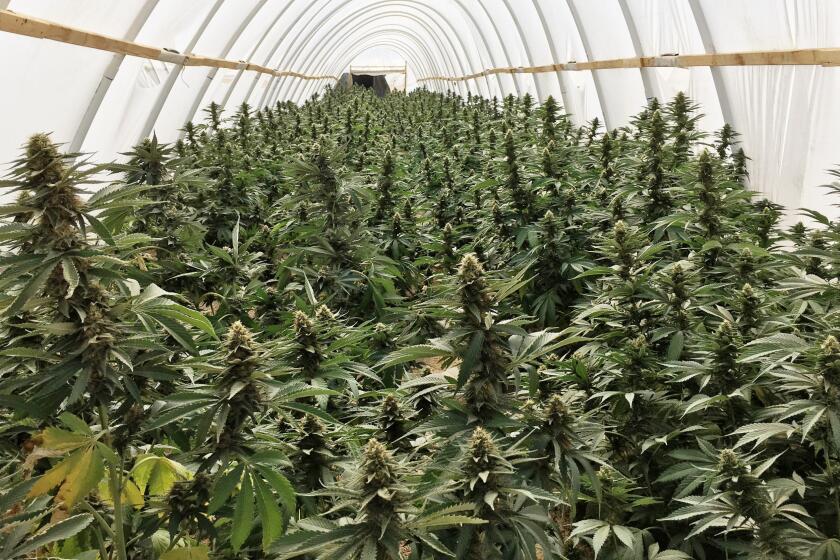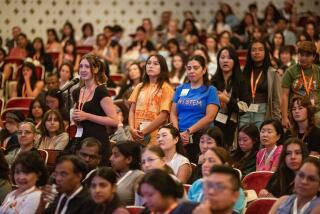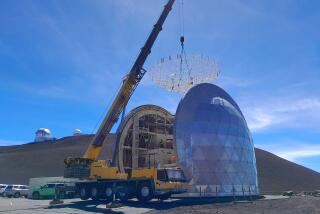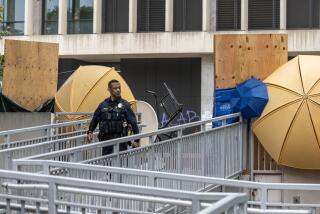A Caltech scientist has apologized for damaging a sacred site. Is it enough?
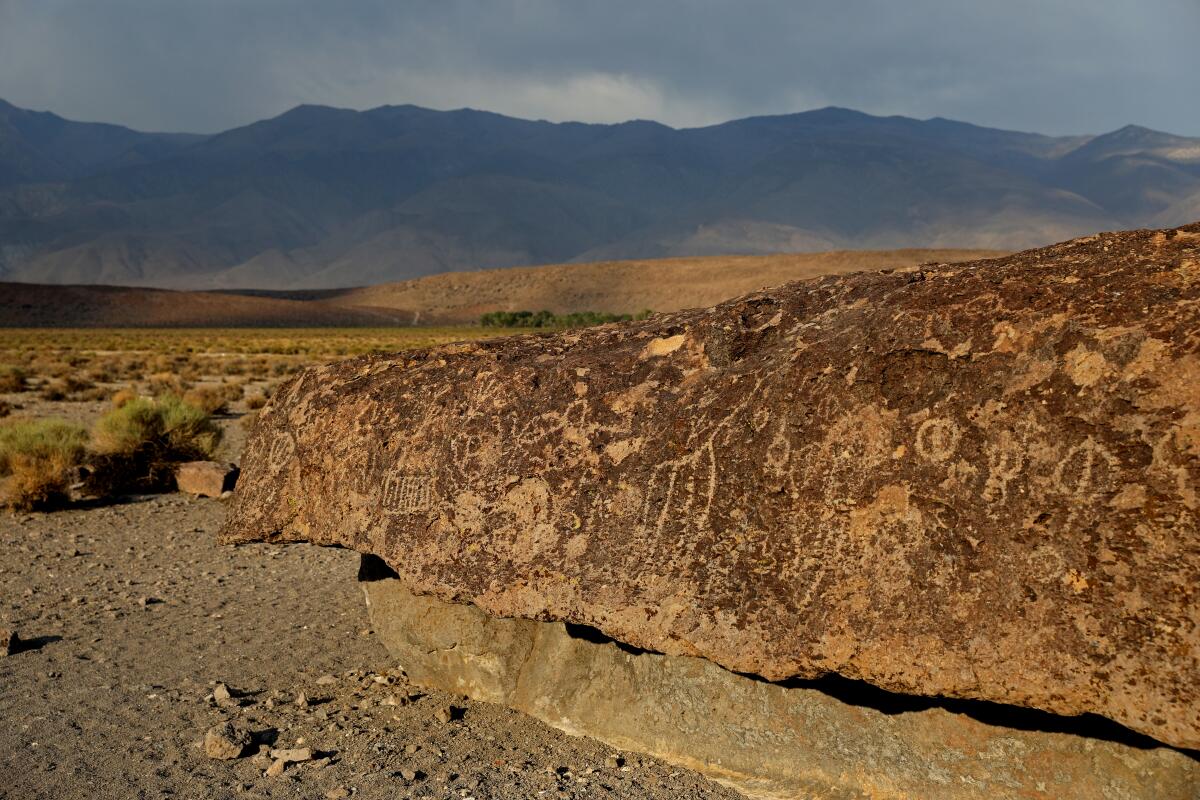
A Caltech professor who outraged Native American tribes by drilling holes in an ancient petroglyph site while doing research without a permit near Bishop, Calif., has issued a public apology, saying he was “horrified” by what he had done.
“While the area’s geology is of significant interest, it is also of cultural and historical importance,” the scientist, Joseph Kirschvink, wrote in a statement. “I am horrified that I inadvertently collected samples from a sacred area that I too cherish and respect. I sincerely and deeply apologize for the disturbance we caused.”
But even as Kirschvink and officials at Caltech seek to make amends for damage caused at a protected archaeological site, a growing number of Indigenous groups and academics say more needs to be done to protect cultural resources from unfettered scientific inquiry.
Already, tribal representatives and archaeologists are demanding an accounting of protected cultural sites in order to identify damage caused by unpermitted research. They are also calling for researchers to be held accountable for such transgressions. The demands have left geoscientists chastened.
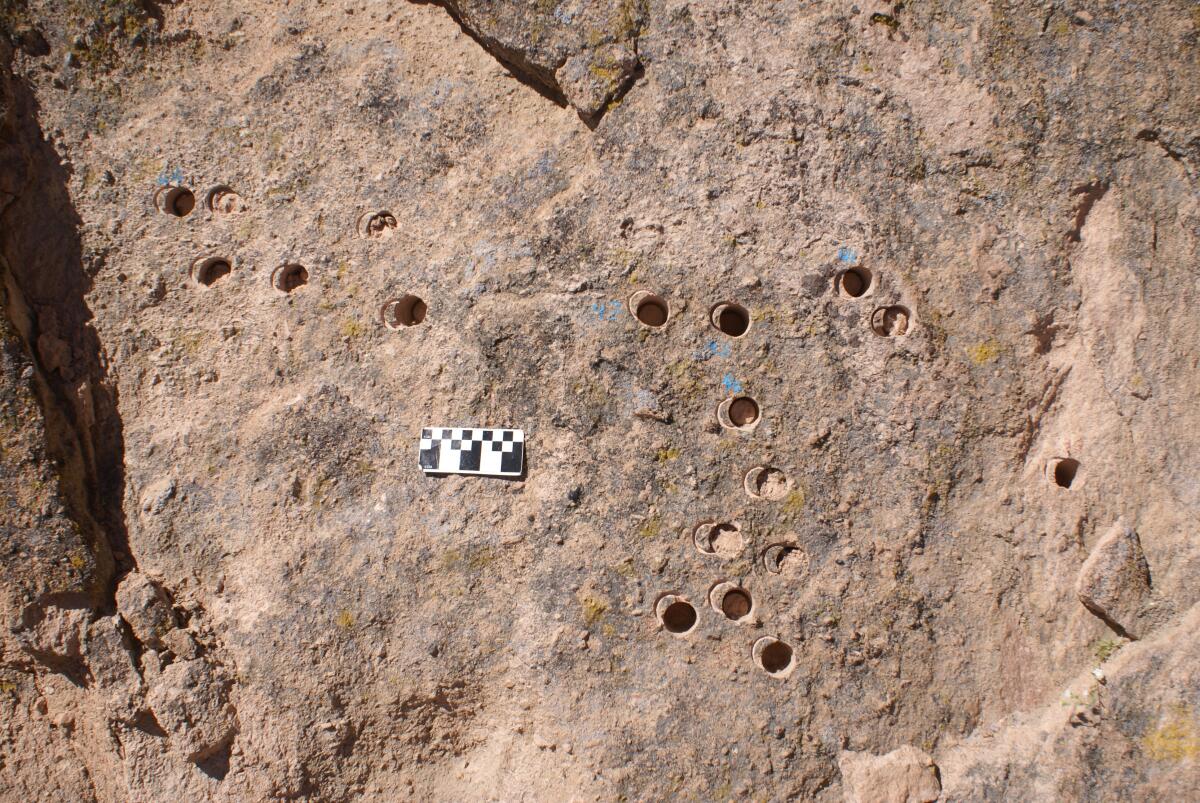
“Clearly, we collectively have to do better,” said Brooks Hanson, executive vice president of science at the American Geophysical Union, a global network of 60,000 scientists working across disciplines in Earth and space sciences. “Permits are required for any sort of invasive research on public lands. We have to do better on that — and that includes all stakeholders: those making the research proposals, those funding grants for them, and the universities responsible for the grants.”
Caltech has agreed to pay $25,465 to cover restoration costs after a researcher damaged a protected petroglyph site sacred to Native Americans.
Kirschvink’s apology followed heated criticism from both Indigenous groups and academics, who said they were stunned to hear that a scientist had conducted drilling just three feet from a rock etching that had survived for probably thousands of years.
“While we are still gathering all of the details of this situation, what we have learned so far is very distressing,” said Deborah L. Nichols, president of the Society for American Archaeology.
Among those who have spoken out is a former research partner of Kirschvink’s, who accused the professor of regularly ignoring permitting protocols and cultural sensitivities.
The professor and Caltech, a prestigious private research university in Pasadena, were suspected of violating the Archaeological Resources Protection Act in 2016 after a witness notified authorities that the professor and a group of students were seen lugging heavy equipment into the Fish Slough Petroglyphs site, which is administered by the U.S. Bureau of Land Management.
A bureau investigation concluded recently that Kirschvink used a pneumatic drill to illegally extract core samples from a federally protected archaeological site in the Volcanic Tablelands, near Bishop in the eastern Sierra Nevada.
The expedition left 29 1-inch diameter holes and splotches of blue paint in an area where prehistoric clans etched symbolic images on cliff faces and boulders thousands of years ago.
In June, Caltech agreed to pay $25,465 to the U.S. Department of the Interior to cover the costs of restoration and repair of the damage, which the Bureau of Land Management determined was “inadvertent.” Caltech also promised “meaningful academic and educational outreach about the importance of obtaining appropriate federal permits before conducting research on public lands.”
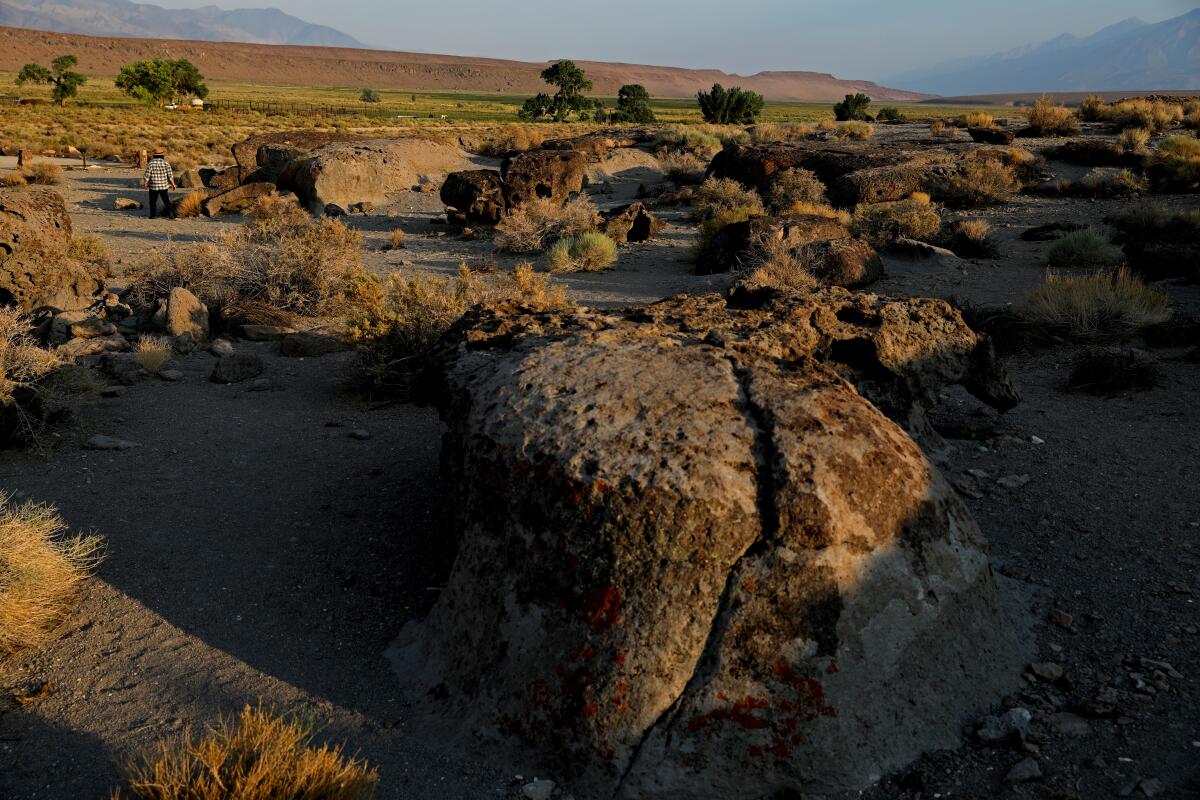
Kirschvink was said to be out of the country and unavailable for comment when The Times reached out early last week. On Wednesday, he expressed deep remorse for his actions.
“There is no excuse for sampling without permission, and more broadly intruding on sacred land is wrong,” Kirschvink wrote. “I recognize the error in my judgment and apologize to the local tribal groups, including members of the Bishop Pauite Tribe, for the impact of my actions.”
Illegal marijuana grows have exploded across the California desert, along with forced labor, ecological destruction and fear
Kathy Jefferson Bancroft, the tribal historic preservation officer for the Lone Pine Paiute-Shoshone Reservation, said she was heartened by the statement. “It’s great that this man apologized — that is, if he’s sincere,” she said.
The question now is, “What’s he going to do to make up for it? He is invited to reach out to the tribes to help come up with a plan to make it better.”
The apology, however, failed to satisfy Peter Ward, a paleontology and astrobiology professor at the University of Washington, who said he ended a partnership with Kirschvink after they co-wrote a 2016 book, “A New History of Life: The Radical New Discoveries About the Origins and Evolution of Life on Earth.”
“I have been in the field with him around the world, and over and over he pushes the boundaries without sensitivity to traditions, land ownership or legal restrictions,” he said.
In an earlier statement, Caltech said that although the drilling was “an isolated incident that took place more than four years ago, we deeply regret the damage caused to public lands, especially in light of this area’s sacred meaning to local tribal groups.”
Caltech said it would “conduct academic and educational outreach to promote fuller understanding, appreciation, and respect for the importance of clear authorization before undertaking research with the potential to affect geological or archaeological resources in any way — both within our community and the broader geosciences field.”
The case created an immediate stir among archaeologists and other academics, who said they would have never imagined researchers drilling in a protected site.
“I’ve been studying petroglyphs for 50 years and I had never heard of this issue until the Caltech case came to light,” said Alan Garfinkle, president and founder of the California Rock Art Foundation. “I’m sending out an alert to every university geology department in the state that this is illegal, and we have to deal with it.”
Barbara Bane, archaeology curator at the Maturango Museum in Ridgecrest, Calif., agrees. “This problem must stop immediately,” she said. “I’m alerting researchers at the Society for American Archaeology to raise the issue in the education and ethics of rock art sites.”
Bane said the incident points out the need to reexamine damage at other sites — damage that may have been dismissed as vandalism or long-forgotten mining activity — to determine whether it was actually done by researchers.
“Those who specialize in rock art need to be aware, so that we no longer mistake these paleomagnetic drill holes for remnants of mining activity — and take action to find the persons responsible.”
At Caltech, Kirschvink is known for cutting-edge explorations aimed at better understanding how biological evolution has been influenced by shifts in Earth’s magnetic field strength, which can be detected in ancient rock formations.
His research has provided a biophysical basis for understanding magnetic effects on animal behavior, including how accumulations of the mineral magnetite in specialized organs may explain magnetic field sensitivity in salmon and higher animals.
Kirschvink also coined the concept of “Snowball Earth” — the hypothesis that the entire planet may have frozen over several times hundreds of millions of years ago, causing severe crises for life and perhaps even stimulating evolution.
Unpermitted explorations by university professors have compounded the frustrations of federal authorities, Native Americans and volunteer stewards who have long complained about thieves prowling remote sites covered with rock carvings.
In addition to Caltech, the University of Texas at Dallas in 2018 paid $19,842 in connection with 29 holes drilled two years earlier without authorization into a rock art site on federal land just over the Nevada border, about 25 miles east of the Volcanic Tablelands.
That research was led by John Geissman, 69, a university professor at the time, who said he deeply regrets the incident.
“I made a big mistake, and it haunts me to this day,” Geissman, who recently retired, said in an earlier interview. “I have obligations as a geoscientist and a human being to do the right thing.”
Then there was Cal State Northridge, which in 2008 paid $25,397 to settle a case that involved the unauthorized drilling of 41 1-inch holes into a petroglyph site administered by the Bureau of Land Management, about 15 miles south of Bishop.
“It’s egregious that professionals who know better do these outrageous things and then apologize later,” said Debbie Benson, director of the Maturango Museum.
“But is remorse enough?” she asked.

